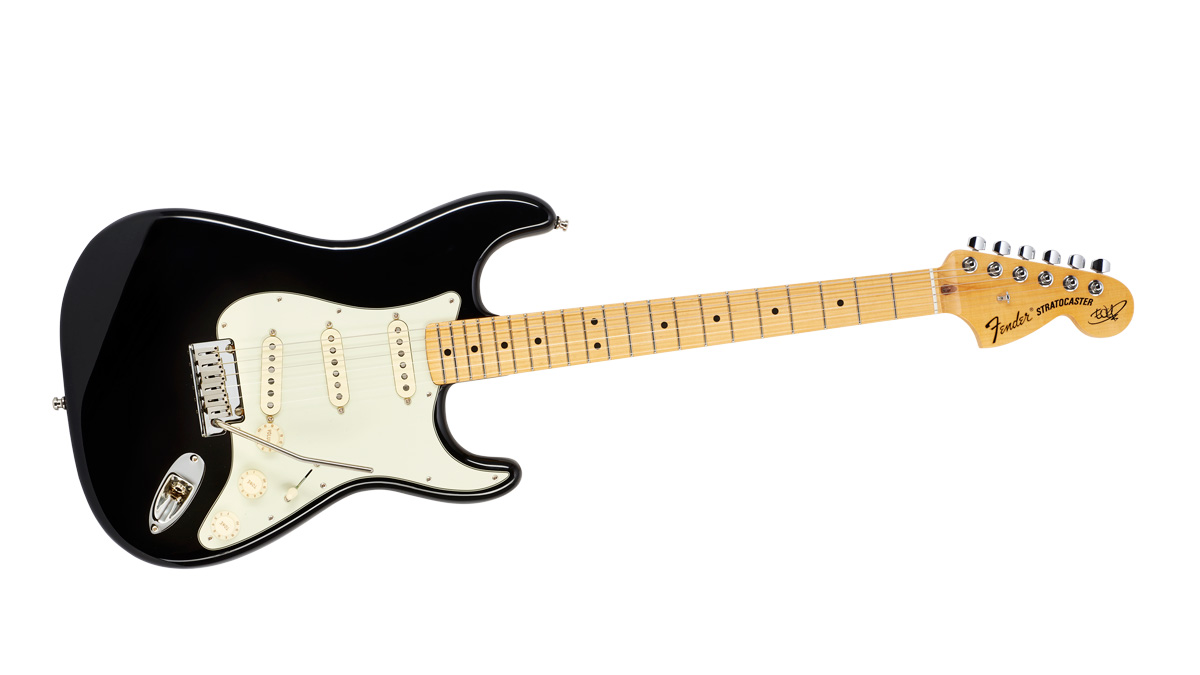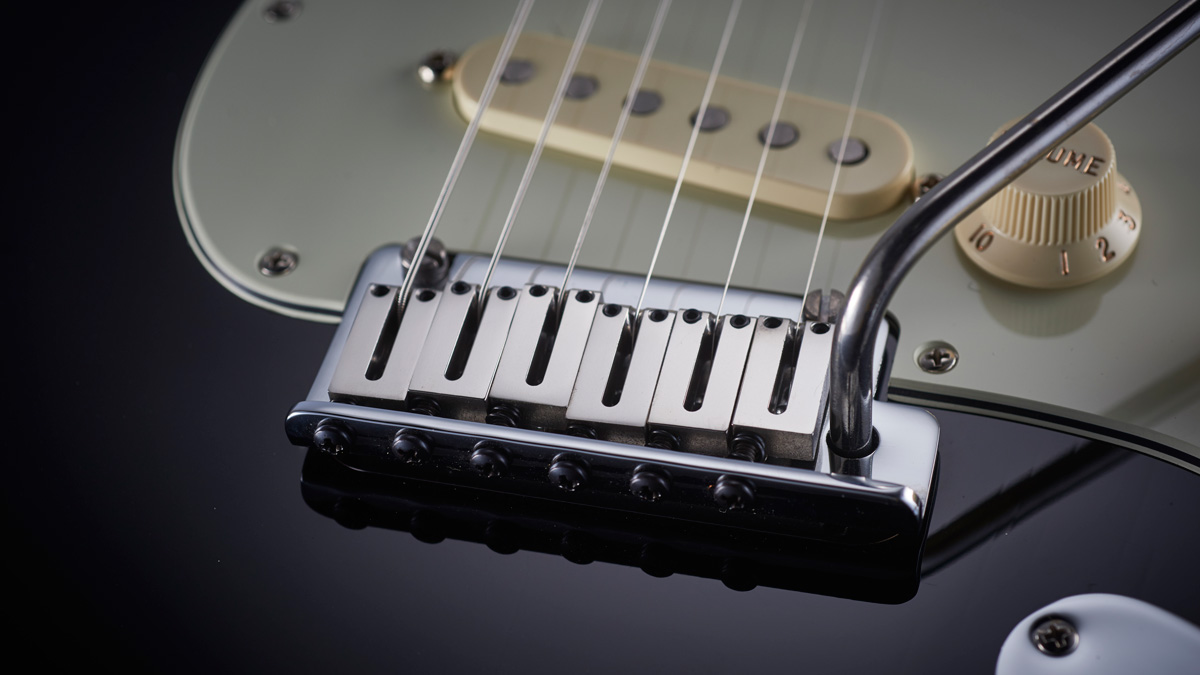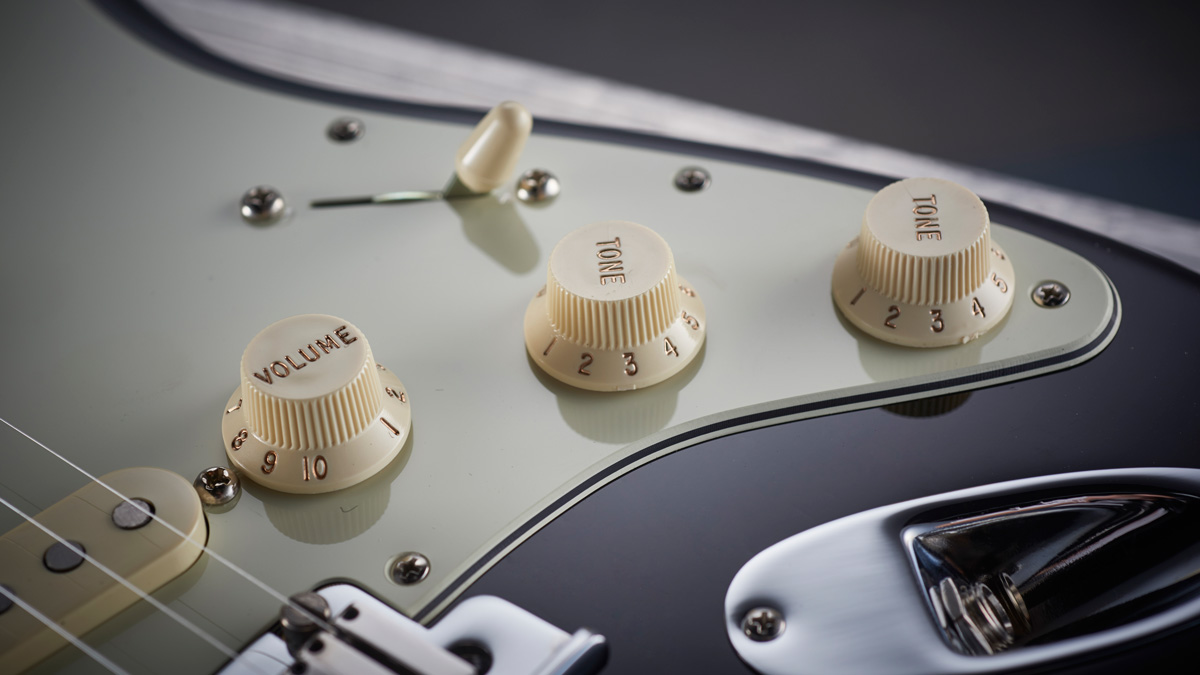MusicRadar Verdict
The Edge's Strat (along with his signature amp) was tested and tweaked on the last U2 tour and, while it's a more mainstream piece, it has working pro written all over it.
Pros
- +
Sensible upgrades make this a stage-ready, brightly voiced Strat with a kick in the bridge position.
Cons
- -
Very little, but the choice of modern Strats can be overwhelming.
MusicRadar's got your back

Fender The Edge Stratocaster

Fender The Edge Stratocaster

Fender The Edge Stratocaster
The Edge uses a wide arsenal of guitars, but one of his all-time key guitars is his 1973 black Strat (he was also elected to Fender's board of directors in 2014).
If its large headstock hints at that original guitar, it's updated here in numerous ways and, it's been tweaked for pro use, pure and simple.
That said, it's loaded with pretty run-of-the-mill updates that you'll find on plenty of contemporary Strats, including: the 241mm (9.5-inch) flatter radius fingerboard, a contoured heel, the modern two-post vibrato with its pop-in arm, rear-wheel locking tuners and Schaller strap locks, a mint-green scratchplate that gives a subtly vintage vibe, aged white knobs and light toning to the maple neck and fingerboard.
Incidentally, the neck is spec'd as quartersawn (as opposed to slabsawn) maple: "The strong and stable upgraded quartersawn maple generates a slightly brighter tone," says Fender.
It's a pretty straightforward drive, too, with a pair of Fender Custom Stagger (flat-pole) Fat '50s in middle and neck positions and a high-output DiMarzio FS-1 to replicate the pickup on The Edge's '73, which he'd retrofitted back in the day.
Bearing in mind the FS-1 pickup was launched back in 1974, it may like seem an odd choice with today's range of options, but if it ain't broke... There are no wiring tricks, just the modern spec tone 1 for the neck pickup, and tone 2 for the middle and bridge, the latter being a No-Load control for maximum treble response.
Feel & Sounds
The Edge's neck feels very familiar, very mainstream compared with the more potentially Marmite feel of the recently-reviewed Marr Fender, which is deeper front to back with a more rounded, more D-like steeper shoulder feel.
Supplied setup between those two is noticeably different, too - although that, of course, is easily changed. The Edge goes for 0.009 to 0.042 gauges; Marr has 0.010 to 0.046 (it also comes with an 0.011 to 0.050 flatwound set in the case, for the brave among us).
Most players will find The Edge a more direct, familiar drive that centres on a bright, chiming voice on its neck and middle pickups, with a stronger, more focused but not hugely unbalanced bridge. Played with a little compression, modulation and, of course, delay, it's effortless to produce those sounds of the man himself.
But there's plenty more here, and the combination of the balanced neck and middle with that more gain-friendly bridge pickup makes for a hugely versatile vehicle. Indeed, Fender tells us the hardly-Edge-like Noel Gallagher has taken delivery of a couple of these scratchplates and loves them.
Dave Burrluck is one of the world’s most experienced guitar journalists, who started writing back in the '80s for International Musician and Recording World, co-founded The Guitar Magazine and has been the Gear Reviews Editor of Guitarist magazine for the past two decades. Along the way, Dave has been the sole author of The PRS Guitar Book and The Player's Guide to Guitar Maintenance as well as contributing to numerous other books on the electric guitar. Dave is an active gigging and recording musician and still finds time to make, repair and mod guitars, not least for Guitarist’s The Mod Squad.
“I have an original 909 – every time I try to use it I feel like I’m ruining it”: House hero Riva Starr on his studio essentials and his love of analogue synths
“A synthesizer that is both easy to use and fun to play whilst maintaining a decent degree of programming depth and flexibility”: PWM Mantis review
“I feel like that song had everything we needed to come back with”: Bring Me The Horizon’s Lee Malia on Shadow Moses, its riff and the secrets behind its tone, and why it was the right anthem at the right time











